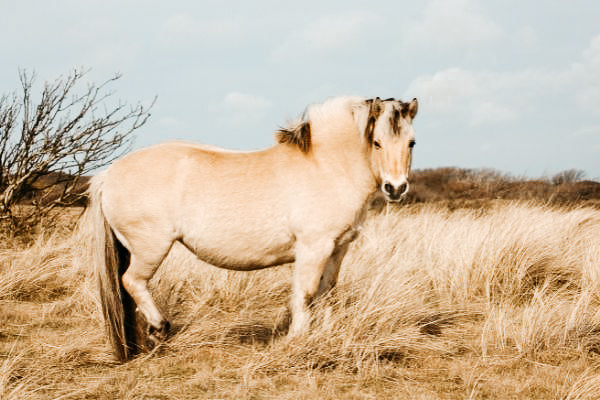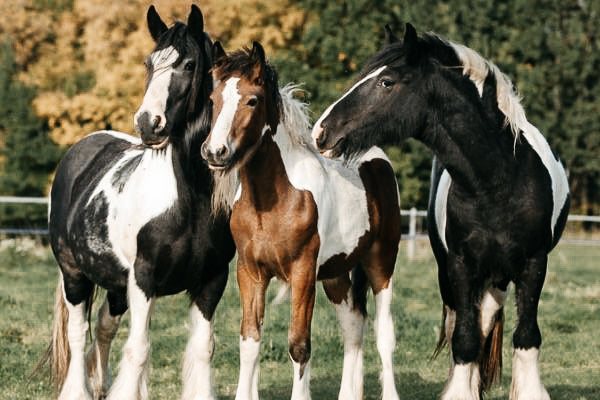
Arabians – noble beauties with an extra dose of stamina
Many myths are told about the origin of the Arabian horse. You probably know the sentence: God took a handful of wind and created the Arabian horse. Definitely heard, right? These and other legends date back far into early history and show us the special effect these wonderful animals have always had on humans. This fascination remains to this day and these elegant thoroughbreds have become an integral part of equestrian sport.
Let yourself be carried away into the world of the Orient!
History and origin
The Arabian is a desert horse. Southwest Arabia and the Nedsch highlands shaped these graceful animals. It is believed that the Arabian horse can even be traced back to breeding from the Babylonian Empire and Egypt during the Pharaonic era. The thoroughbred Arabian is therefore considered to be the oldest breed in the world.
According to a legend, there were originally 5 courageous mares who were loyal to their master, the prophet Mohammed. He chose these to continue breeding a pure strain. Characteristic breeding lines later emerged from them (e.g. b the fine type or a narrow racehorse type). From then on, great importance was attached to keeping the blood pure. No foreign horse breeds were allowed to be included in the breeding. This was the only way the thoroughbred Arabian was preserved.
Arabian breeding today
The noble horse breed becomes a refiner for many other horse breeds. Arabians can often be found in the papers of our riding horses. Let's call it a toughness, health, endurance, beauty, and sociability update par excellence. All of the “athletes” have benefited greatly from the influence of the Bedouin horses.
Today the Arabian thoroughbred is represented worldwide and is as popular as ever.
You can find well-known stud farms, for example, in:
- Janow Podlaski in Poland
- Tersk in Russia
- Crabbet Park in England
- Babolna in Hungary
The WAHO (the global World Arabian Horse Organization) was founded in 1970 and is based in England. This only recognizes a single breeding association per country. With us the VZAP (Association of Breeders and Friends of the Arabian Horse. Entered here are thoroughbred Arabian horses and . ATTENTION:
Shagya Arabs, Anglo-Arabs, Arabian half-bloods and Arabs (all of which may have foreign blood in their ancestry). Not all Arabian horses are the same!
Do you always hear or read the word “asil” in connection with the thoroughbred? This “noble” designation is only given to horses whose lineages can be proven to go back to original Arabians from a desert breeding (Bedouin) on the Arabian Peninsula.
In German pedigree papers you will also find an OX after the name of the animal for the pure Arabian horse.
Exterior and interior
The extreme weather conditions of the desert produced tough horses. With their medium size (148 - approx. 158 cm) the body appears well proportioned. The noble head with the mostly concave profile (pike head) is typical of the breed. The forehead and the ganache are relatively wide. An alert, expressive and large eye emphasizes the temperament of these beautiful animals.
The neck line is curved and ends in a sloping, long shoulder area. The withers are clearly pronounced. The horse stands square, although the croup can sometimes be very short.
The high tail base is also a trademark of the Arabian. When excited, this is carried up and symbolizes a waving flag. This is called “the banner of the Prophet.” They proudly show off their floating gaits. The fine long hair and silky fur also shine beautifully in the sun. A feast for the eyes!
The legs of the "Bedouins" are sinewy, dry and have particularly hard, small hooves. When it comes to fur color, gray predominates, but there are also foxes, browns and the occasional black horse.
Interestingly, Arabian horses have several fewer vertebrae than other horses and only 17 instead of 18 ribs.
In the desert, horses and people had to be able to rely on each other. The close proximity to one another made these elegant creatures incredibly human-related. They are extremely productive, fast, light-footed and have incredible endurance. The breed itself is rather late maturing. But durable and easy to handle.
Use of the Arab
The Arabian horse is at home in the complete spectrum of equestrian sports. Just as loved as a leisure horse as well as in classic dressage, western riding, in front of a carriage and as a racing horse. This noble horse breed is clearly ahead in endurance riding. Distance sports are simply in their blood. It's not for nothing that these experts take first places at the Distance World Championships. The related Shagya Arabians are also ambitious and show their unbridled energy in eventing and endurance riding.
Fact: Thoroughbreds - multi-talented and pretty for everyone.
Summary
Yes, ok - it comes to the end: The proud Arabian horse is somewhat of a symbol of prestige. But if not this race, then which one? These noble animals are the horses with probably the oldest past history. So they are benevolently granted the opportunity to spend their lives not only as a stylish leisure horse but also as a breathtakingly beautiful “model partner”. Who can resist the sight of them?
Animalons brush recommendation for the Arabian:
For the daily grooming routine of the elegant Arabian horse's coat, we recommend the Care Flex curry comb, which ergonomically adapts to the horse's contours and efficiently removes dirt and dust.
After the harrow unit, the loose dust can be easily brushed out with the Care Flex horsehair brush brush . In addition, the real hair brush creates a smooth shine for an even more amazing appearance of the Arabian.
Discover more posts

Norwegian Fjord horses – the pretty duns of the far north
There is hardly anyone who doesn't like the look of the compact ponies. The little Norwegians with their cheeky standing mane are actually more popular than ever. Among horse breeds,...
Continue reading
Tinker – the colorful horse breed
The colorful Tinker has become an integral part of Germany's pastures. In the 1990s it became increasingly popular, especially among recreational riders. And of course there are...
Continue reading
